The history of rock has a hidden part, although in these times of exclusive reissues almost nothing is beyond our reach: the lost albums that never saw the light of day, the works of some of the most important artists in rock and pop music, often in their period of maximum splendour, that remained buried in their archives for often incomprehensible reasons. These cursed records often achieved a legend that far surpassed that of the released albums, such as the Beach Boys‘ Smile or Prince‘s Black Album. So let’s take a look at some of the most notable ones:
The Beach Boys – Smile (1967)
You can’t start this review anywhere else, the most mythical lost record in history, the legendary Smile by the Beach Boys, which should have been Brian Wilson‘s masterpiece in his creative battle with the Beatles to write the best record of all time. It all began in 1965 when the elder Wilson brother heard the Liverpool band’s Rubber Soul, a perfect album from start to finish in which all the songs flowed and there was no fillr. The Beatles were inaugurating the LP’s heyday, and the Beach Boys’ leader realised that the format could be used for much more than just compiling singles and throwing in three or four filler songs.

In the midst of a creative explosion, and with his head always bordering on madness, he sent touring to the curb, locked himself in the recording studio and began to use it as just another tool. Wilson was the songwriter, arranger, producer and main interpreter of all the band’s songs, so he began to pull more from the expert session musicians at his disposal, the members of the legendary Wrecking Crew, and began to elevate pop songwriting into the stratosphere. As a lyricist he was still unable to convey all his feelings, but musically he was unequalled. His first test was the B-side Beach Boys Today, a symphony of great ballads that can be seen as the precursor to the incredible Pet Sounds, one of the greatest wonders ever recorded. Wilson removed his cousin Mike Love as lyricist and replaced him with Tony Asher, telling him what each song should be about, the result is a work of art that did not go unnoticed on the other side of the Atlantic.
Paul McCartney was bowled over by Wilson’s genius and considered it the best album ever made (he still names it as his favourite), so he set about the task of surpassing it. For his part, Wilson soon delivered one of the best songs ever as a single, “Good Vibrations”. Expectations for his new work couldn’t have been higher, he was the Mozart of pop music and all eyes were on him. The bad news is that Wilson had serious mental and ego problems, and his environment was not the best. For one thing, his father was a bully who was pathologically jealous of his eldest son’s talent; for another, his band, mainly the asshole Love, weren’t entirely convinced by Wilson’s musical shift from surfing, girls and cars to the sophistication of Pet Sounds.
Wilson had found himself a new collaborator, Van Dyke Parks, and his head kept flowing with more and more complex musical ideas, little wonders that could be superimposed on each other to create incredible things, mini pop symphonies made up of various pieces that fit together like a complicated puzzle; if Pet Sounds had “Wouldn’t It Be Nice” and “God Only Knows”, Smile had “Heroes & Villains” and “Surf’s Up”, as well as the reworked “Good Vibrations”. But Wilson was becoming increasingly unstable and his quirks were becoming more and more particular. The pressure was getting to him and he had no support, especially after Parks left the recordings to concentrate on his solo album.
The final nail in Smile‘s coffin was Paul McCartney‘s visit to the studio where it was being recorded. The Beach Boys were in the middle of “Vegetables” and Paul happily agreed to chew a carrot for the record, then dropped by Wilson and his wife’s house, played them “She’s Leaving Home” and played them a copy of “A Day In The Life”. Brian Wilson wept because of the beauty of the songs, but also because he knew the Beatles had outdone him. When Sgt. Pepper’s was released Wilson decided to bury the project for good, it had already suffered long delays but releasing it after the Beatles’ album would have been disastrous for his ego.
In the end, a lighter version was released, entitled Smiley Smile, and the album ended up becoming legendary. I still remember, in the early days of the Internet, that one of my amusements was to get hold of all the possible versions of it, putting the pieces together and looking for the right order, in the end Wilson returned to it and released it solo with new recordings in 2004. In 2011 the monumental The Smile Sessions would also appear, including a version quite close to what could have been released in 1967 and almost everything that was recorded for the project, including more than 30 versions of “Heroes & Villains”. It’s a wonderful album, maybe the second best of the Beach Boys’ career, but it didn’t beat Pet Sounds, which was painful in itself, and besides, as Wilson himself acknowledged, it wouldn’t have been a match for Sgt. Pepper’s, it wouldn’t have come close, St. Pepper would have kicked our ass…
The Velvet Underground – VU (1969)
By 1969 John Cale had left the Velvet Underground and had been replaced by Doug Yule. It was the year that the band’s third album appeared, simply titled The Velvet Underground, which was calmer and quieter, far from the experimentation of the first two albums. But the band had continued recording and had enough material to release another album and complete their contract with MGM. But the label underwent a restructuring and the new owners decided to get rid of bands that didn’t sell records, and the Velvet Underground was, at the time, the spitting image of that. So we were left without hearing what would have been the band’s fourth album, an album that would see the light of day in the 80s when MGM, who kept the rights to the songs, released VU and Another View.
The thing is, that lost record would have been another outstanding one for a band that only made records of that kind. Among the absolute classics would have been the wonderful “Stephanie Says”, with Cale still in the band lending his wonderful viola to the arrangement, “She’s My Best Friend”, recorded on 14 May 1969, “Lisa Says”, “I’m Sticking with You” (a duet between Lou Reed and the childish voice of Maureen Tucker), “The Ocean” or “We’re Gonna Have a Real Good Time Together”, all of them in versions far superior to those made by Reed in his solo career. Despite their non-publication, these songs are a fundamental part of the band.
The Who – Lifehouse (1970)
Tommy had been an incredible success and had propelled the Who to enormous levels of popularity. The Rock Opera formula had proved successful and its creator, Pete Townsend, decided to stick with it. Of course, if Tommy‘s plot was convoluted enough, the plot of his next work, the ambitious Lifehouse, was not even followed by his own band mates, adolescent wastelands, pure musical vibrations, souls abandoning their bodies to reach a musical nirvana… All this to create a universal chord that reflected the individuality of each person. It was gibberish, but Townshend was at the peak of his musical career and everything he came up with to accompany that complicated story was great. As the band was also at the peak of their career, the music they made was incredible, so in the end they decided to cut their losses, leave Lifehouse and deliver what may be the best album of their career, Who’s Next.
If there was ever a time when the Who could have released a double album without any filler, it was during this period. Just thinking about some of the songs that were left out, such as “Water”, “Pure And Easy”, “Let’s See Action”, “Time Is Passing”, “Too Much Of Anything” or “I Don’t Even Know Myself”, is enough to create another essential album in their discography.
Neil Young – Homegrown (1975), Hitchhiker (1976) and Chrome Dreams (1977)
Possibly the Neil Young of the 70s is the champion of lost albums. Not counting the aborted third album by Crosby, Stills, Nash & Young, the Canadian recorded three albums; Homegrown, in 1975, Hitchhiker, in 1976, and Chrome Dreams, in 1977; which were not released at the time, although the first two have now been rescued as part of his Archives series.
The first was about his separation from his wife, the actress Carrie Snodgrass, with soft country rock aromas and a tone reminiscent of Harvest, but the wound of divorce was still close and Young was not so clear. In 1975 he threw a party and invited several friends, including members of Crazy Horse and The Band, and played them two records, the one he had just recorded, Homegrown, and one he had recorded in 1973, a dark and chilling work about the overdose deaths of close friends like Danny Whitten and Bruce Berry. In the end he decided to release the latter, called Tonight’s The Night, and we could hear the damage done by the needle but not the damage done by (un)love. 45 years later Young decided to release it and we were able to have the full picture.
He recorded the second one on the night of 11 August 1976 with the only company of his guitar (and a piano on the last song), his harmonica, his friends David Briggs and Dean Stockwell, some marijuana and a bottle of José Cuervo. Among the songs he recorded were some of the best of his career, such as “Powderfinger”, in its first acoustic version, or “Pocahontas”, but Young again discarded the result and it took more than 40 years for the album to be finally released.
Finally, Chrome Dreams is the album he had ready for 1977, with some of the best songs from Hitchhiker, but also the wonderful thunderstorm of “Like A Hurricane”, which he had recorded in 1975, and the first, calmer version of “Sedan Delivery”, but, again, the album was left unreleased and Young released American Stars ‘n Bars instead. Unlike the other two, it has not yet officially seen the light of day.
David Bowie –The Gouster (1974), Toy (2001)
David Bowie also has his hidden treasures, but with the release of Toy, they are now available to the world. The first lost album came during his American period, during a few days at Sigma Studios in Philadelphia, a city that was beginning to champion its own warmer, more sophisticated soul sound, Bowie made his first approach to funk and soul, with Luther Vandross on backing vocals and David Sanborn‘s sax replacing Mick Ronson‘s guitar as the main soloist. He recorded seven songs, four of which would end up on Young Americans, three on other versions, minus the title track which is the only one on this preparatory album, which was to be called The Gouster, which ended up in that form on Bowie’s next album. I’m sure Bruno Mars and Anderson. Paak have soaked up this period of Bowie to prepare for their joint album as Silk Sonic.
To get to Bowie’s next lost album we have to move forward to the 21st century. After the huge success of his performance at Glastonbury in 2000, Bowie went into the studio with that band that included guitarist Earl Slick, bassist Gail Ann Dorsey and pianist Mike Garson, and with that high they began recording Toy, an album in which Bowie looked back to his first songs, the ones he made before his triumph with “Space Oddity”, in his Mod period. The sessions went wonderfully, the atmosphere was very good and the old songs, although they had rather weak lyrics, held up quite well and were reinforced by the new arrangements, which saw a happy, guitar-driven Bowie. But his label wasn’t particularly excited about the album and kept delaying its release. The singer began recording Heathen and was so disappointed with EMI/Virgin that he ended up signing with Columbia. By the time he did, however, he had an album of new songs and Toy remained unreleased until this year.
Bruce Springsteen – The Ties That Bind (1979) and Nebraska (E Street Band) (1982)
In those 1974 sessions Bowie recorded a couple of covers of a then practically unknown artist called Bruce Springsteen, who would become a world star with his third album, Born To Run, released in 1975, and who is possibly the artist with the most discarded material in the history of popular music, as Springsteen’s perfectionism would lead him to leave out dozens of great songs from several of his albums. Starting with Darkness On The Edge Of Town, from which a magnificent double disc of discards entitled The Promise was recently released, to the wonders that were left out during the recording of Born In The USA, such as “Murder Incorporated”, “Pink Cadillac”, “Rockaway The Days”, “Johnny Bye-Bye”, “Stand On It” or “Janey Don’t Lose Your Heart”, not to mention that The River could have been a quadruple disc. Of course, if we stick to really lost albums, albums that were going to be released but in the end were scrapped, Springsteen has at least two.
The first would be The Ties That Bind, the 10-song album he was to release in 1979, after several sessions with the E Street Band Springsteen decided on the order of the songs and called Bob Clearmountain to mix them, the tapes were sent for mastering and the company rubbed their hands together for the Christmas release of their golden goose, but, in the end, Springsteen backed out and decided that he had to keep working on the album. This would result in the first double album of his career, The River, but countless songs didn’t make the cut, including “Cindy”, “Stolen Car (Vs. 1)”, “Be True” and Loose Ends from the archived The Ties That Bind.
The second would be the version of Nebraska, which he came to record with the full E Street Band, but in the end rejected and decided to release the album with the original demo, which only included his voice and guitar. After the extended versions of Darkness On The Edge Of Town and The River, it is more than likely that one day Springsteen will decide to rescue those sessions and release them, although it is hard to imagine songs as dark as the title track or “Atlantic City” being passed through the joyful spirit of his band.
Prince – Dream Factory (1986), Camille (1987), Crystal Ball (1987), Black Album (1988) and Welcome 2 America (2011)
In 1986 Prince was on top of the world, his commercial success backed by a critical acclaim not seen since the days of the Beatles. After several albums with The Revolution, 1999, Purple Rain and Parade, the artist who should be recognised as the fucking master of the 80s decided that his band should bring more than just their instruments to the next album. It was to be called Dream Factory, and it was to be a collaborative work in which the band members would contribute their ideas and songs to the project.
The album combined Prince’s solo songs with collaborations with Wendy Melvoin and Lisa Coleman, the two main creative forces behind The Revolution, as well as two songs written by the creator of “Purple Rain” and Wendy’s sister Sussannah, with whom he was in a relationship. These were “The Ballad of Dorothy Parker” and “Starfish & Coffee”, the album was rounded out by “Visions”, a Coleman instrumental, “Dream Factory” (the title track), “It’s a Wonderful Day”, “Big Tall Wall”, “Strange Relationship”, “Teacher, Teacher”, “A Place in Heaven” and “Sexual Suicide”.
The album was ready for release, but Prince had grown tired of The Revolution during the Parade tour, so the singer fired the band and forgot about Dream Factory, turning his energies to an eccentric project in which he used a high-pitched, funky voice. The first song he recorded was “Housequake” and Prince decided to go under the pseudonym Camille and record an entire album under that alias. A couple of Dream Factory tracks were reused, including the title track, and a few new ones were recorded, such as the funk blast called “Rebirth Of The Flesh”.
But shortly before it was due to be released the project was cancelled, there was too much material and Prince began to flirt with the idea of releasing a triple album called Crystal Ball. For this he combined several Dream Factory songs with most of the Camille project and continued to record new songs like “Forever In My Life” or the spectacular ballad “Adore”. Again the album was ready for release, but the label panicked and convinced the artist not to commit commercial suicide and to release a double album. Thus we come to what is arguably the artist’s pinnacle and the best album of the 1980s, Sign ‘O’ The Times. On the spectacular Deluxe reissue that released last year, almost all the tracks from the various projects can be tracked.
The funny thing is that as soon as Sign ‘O’ The Times was released, Prince went back to his old ways and recorded a remarkable album called Black Album, because of its completely black cover, although it was also known as The Funk Bible, because of its sound content. It was Prince’s funkiest album to date and was an answer (a slap in the face, more like) to all those who had accused him of becoming too pop, too white. But just as it was about to be released, with several hundred promotional copies floating around, Prince backed out and decided the record was evil and couldn’t see the light of day. Soon after, he recorded another album, entitled Lovesexy, and the Black Album became one of the most sought-after treasures by collectors, being a sort of Smile of the 80s, I remember leaving me five thousand pesetas at the time, along with my older brother, to get a copy of it on vinyl. Bono and The Edge even named it as one of their favourite albums of the year in Rolling Stone, not in vain Prince himself put a little message in the video of “Alphabet Street”, “don’t buy the Black Album, I’m sorry”, even so, seeing that people didn’t pay much attention to it either, he finally decided to release it on 22 November 1994.
It was a pity that it didn’t see the light of day, as the release of Lovesexy, a good album in itself, was the first proof that Prince’s reign as fucking master of the 80s was coming to an end. The fact is that by combining songs from both albums Prince could have achieved an album on a par with Sign ‘O’ The Times, I imagine it like this, “Le Grind” opening on a high, “Alphabet Street” leaving you breathless, “Cindy C” in third place, creating the funkiest start to a record ever, over Parliament‘s Mothership Connection, then the unstoppable “Eye Know”, the tone would darken with the electro funk rap of “Bob George”, followed by the unclassifiable “superfunkycalifragisexy” and closing the first side, which I will call with one of the possible titles for the Black Album, The Funk Bible, with “Lovesexy”. The second side, more heterogeneous, would also give way to ballads like “When 2 R in Love” (the only song from the Black Album that ended up on Lovesexy), “I Wish You Heaven” and “Anna Stesia”, the pop gem “Glam Slam” and would close, in style, with a nod to the first side with the tremendous “Rock In A Funky Place”.
Although of less interest, especially considering all the material he has archived from his glorious period between 1980 and 1988 (although they are coming out with the magnificent extended versions of 1999 and Sign ‘O’ The Times), we can’t forget the appearance of Welcome 2 America in the same year, an album that the genius from Minneapolis recorded in 2010 but which was archived before it was released. It’s not top-notch Prince, but it’s of a fairly high standard for the era in which it was released. It is an album in which we can see that the author of Purple Rain was influenced by some of his most renowned disciples, such as the leaders of the neo soul movement, Erykah Badu and D’Angelo, although the best moment comes with the recycling of part of “Cream” to create “Hot Summer”.

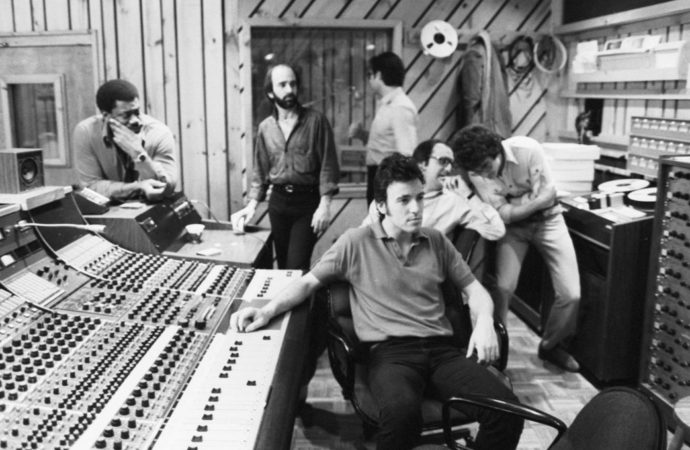

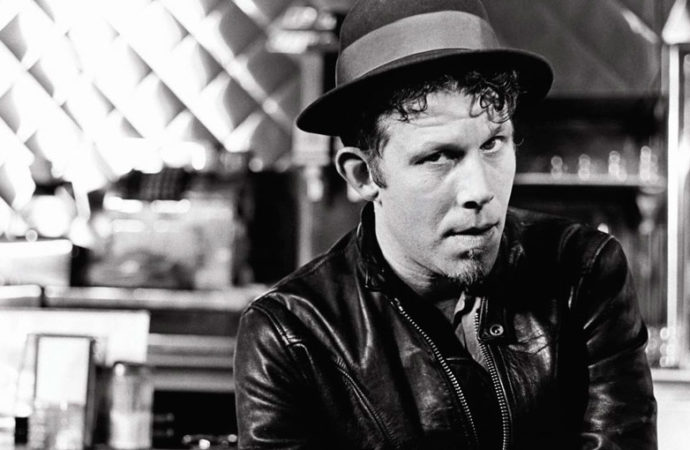
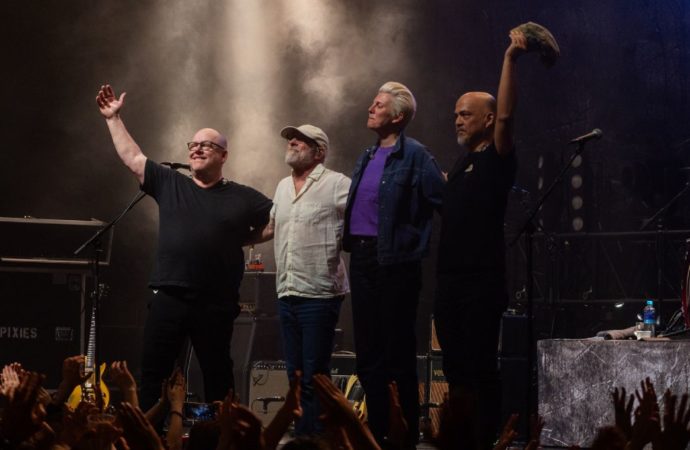


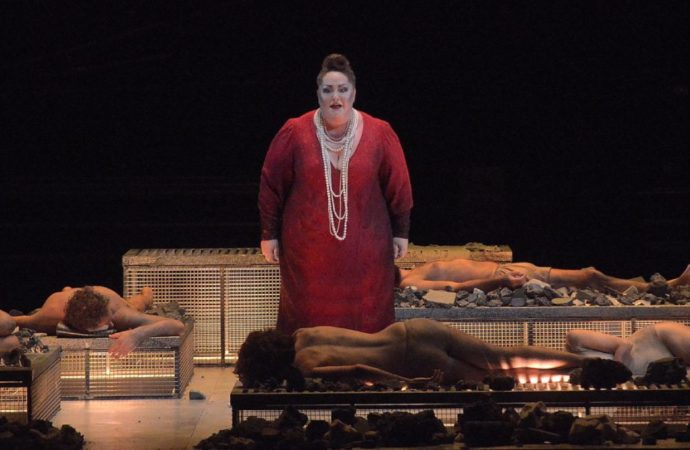
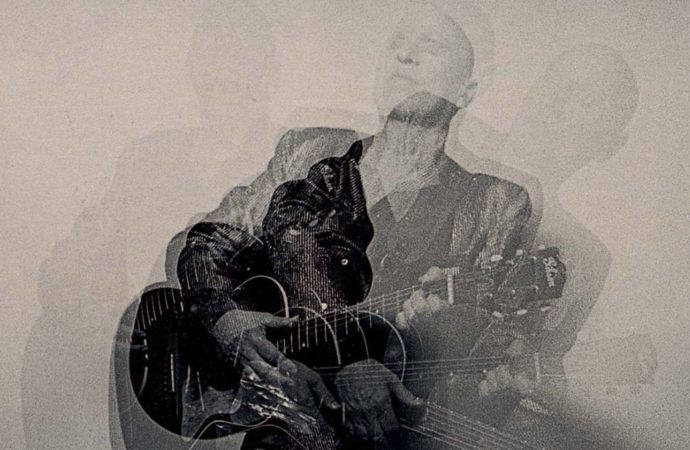
No one has posted any comments yet. Be the first person!